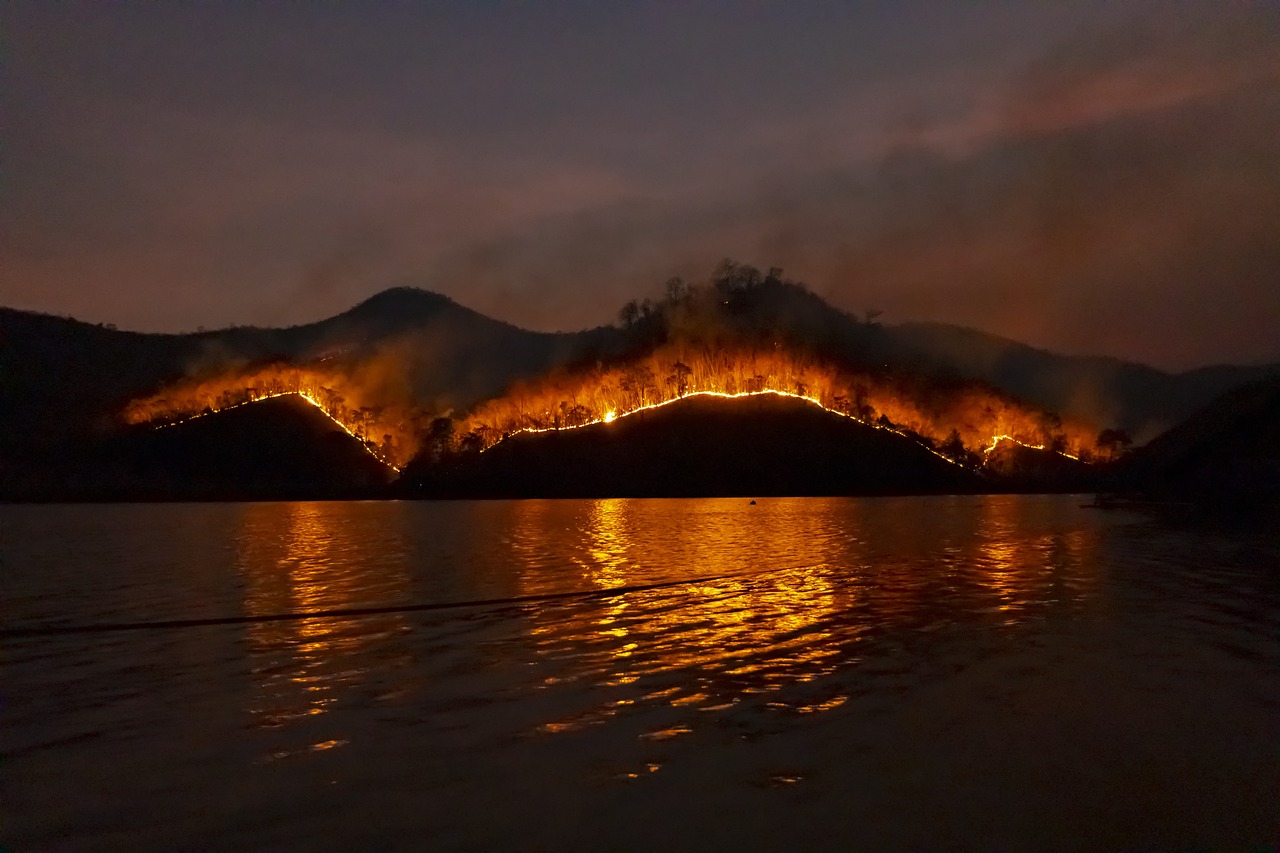California, the Golden State, is no stranger to the devastating effects of wildfires. For years, wildfire ignition sources in California have been a pressing issue, with growing concerns over the increasing frequency and intensity of these fires. As 2025 unfolds, Los Angeles, along with other parts of California, continues to experience the immense destruction and loss that come with wildfires. These fires not only threaten lives and property but also have long-lasting environmental effects. Understanding the ignition sources and their causes is critical for protecting communities and mitigating future damage. In this article, we will explore the various ignition sources, the role of human activity, and what is being done to combat these deadly fires.
Understanding the Wildfire Problem: An Ongoing Crisis
California’s wildfires have always been a part of its natural landscape, but the patterns are changing. Wildfire ignition sources in California have evolved, making it more difficult to predict and control wildfires. According to recent reports, 2025 has already seen several wildfires spark in Los Angeles, many of which are tied to human activities. While natural causes such as lightning continue to play a role, human negligence remains one of the most significant contributors to fire outbreaks.
One of the most common wildfire ignition sources in California is the careless use of fire by people. Whether it’s an improperly managed campfire or a discarded cigarette, small actions can result in catastrophic consequences. To better understand the sources of wildfires, let’s delve deeper into the most common ignition causes and how they contribute to the spread of these fires.
Improper campfires causing wildfires is a growing concern, especially in areas that experience heavy tourism. Campfires are a tradition for many, but when they are not properly extinguished, they can quickly lead to widespread destruction. It’s vital for campers to adhere to fire safety protocols to prevent these fires from becoming uncontrollable. For more detailed information on the precautions campers can take, check out this guide on Improper Campfires Causing Wildfires.
The Role of Human Activity in Wildfire Ignition
Human activity is a major factor in wildfire ignition sources in California. Whether intentional or accidental, people play a significant role in sparking fires across the state. A study conducted in 2024 revealed that nearly 85% of wildfires in California were caused by human activity. Among these, the most common causes are improper campfires, power lines, discarded cigarette butts, and arson.
In the case of improper campfires causing wildfires, many campers fail to fully extinguish their fires before leaving. Even small embers left behind can reignite when winds pick up, leading to large-scale wildfires. It is crucial for visitors to public lands to be responsible with fire use and to follow all regulations to prevent fires.
Another major contributor to wildfire ignition sources in California is power lines. High winds and extreme weather conditions can cause power lines to fall or spark, leading to fires in dry vegetation. In 2025, there have been several reports of wildfires sparked by downed power lines in rural parts of Los Angeles and surrounding counties. These fires often spread quickly, as the dry conditions in these areas make it easy for flames to spread uncontrollably.
Moreover, discarded cigarette butts are a well-known cause of wildfires. Despite the increasing awareness of fire safety, many people still carelessly toss their cigarettes into dry grass or brush. This seemingly small action can quickly turn into a major disaster, especially during California’s hot, dry months.
Lastly, arson remains a significant issue in wildfire ignition. Intentional fires set by individuals are often the most difficult to prevent and can cause massive destruction. Law enforcement agencies continue to investigate suspicious fires, but the challenge remains significant due to the vast areas affected by wildfires.
Climate Change: Amplifying the Wildfire Threat
While human activity plays a significant role in wildfire ignition sources in California, climate change has exacerbated the situation. Over the past few decades, California has experienced warmer temperatures, prolonged droughts, and stronger winds, all of which contribute to the rapid spread of wildfires. The 2025 fire season has been particularly challenging, with conditions already ripe for wildfires due to an extended period of dry weather.
As temperatures rise and precipitation becomes more erratic, California’s vegetation becomes more susceptible to ignition. Wildfire ignition sources in California are no longer limited to human negligence; the natural environment itself is becoming more conducive to fires. Droughts weaken trees and plants, making them dry and more easily combustible. Combined with high winds, the risk of wildfires increases significantly.
Natural Ignition Sources: Lightning and Other Environmental Factors
While human activity is the leading cause of wildfires in California, wildfire ignition sources in California also include natural causes such as lightning strikes. Every year, lightning strikes ignite hundreds of wildfires, particularly in the more remote, forested areas of the state. While lightning may seem like an unavoidable force of nature, it still contributes to a significant number of wildfire outbreaks. However, these fires are typically more manageable than those sparked by human activities, as they are often confined to more isolated areas.
In addition to lightning, environmental factors like extreme heat and drought conditions contribute to the risk of wildfires. These environmental conditions have been increasing in frequency and severity due to climate change, creating a perfect storm for wildfire ignition. The state’s natural landscapes, which are often dry and filled with vegetation, become much more susceptible to fires under these conditions.
What is Being Done to Prevent Wildfire Ignition?
California’s government and emergency services have been actively working to reduce the risk of wildfire ignition sources in California. Efforts to improve fire safety have included better management of campgrounds and public lands, stricter regulations on power lines, and an increase in wildfire preparedness training for both residents and visitors.
To reduce the risk of improper campfires causing wildfires, the state has implemented various measures. Campgrounds are now required to have fire safety protocols in place, including clear instructions on how to safely extinguish fires. Many areas also have a “fire ban” in place during extreme fire danger conditions, which restricts the use of open flames.
For power lines, California has invested in upgrading its electrical grid to prevent sparks from causing fires. Many utility companies are now required to implement fire prevention measures, such as de-energizing power lines during high-wind conditions or when fire risks are elevated. This proactive approach helps to reduce the number of fires sparked by electrical infrastructure.
Public Awareness and Education: Key to Prevention
Perhaps one of the most important ways to prevent wildfire ignition sources in California is through public awareness and education. The state has launched several initiatives aimed at educating residents and visitors about fire safety. Programs like “Firewise Communities” and “Ready, Set, Go!” encourage people to create defensible spaces around their homes, ensure their properties are fire-safe, and evacuate safely in the event of a wildfire.
Additionally, California has also implemented strict penalties for those caught starting fires, whether through carelessness or intention. These measures aim to deter arsonists and encourage people to take wildfire prevention seriously.
Conclusion: A Community Effort to Prevent Wildfires
The devastating effects of wildfires in California are undeniable, and the wildfire ignition sources in California continue to pose a significant threat to the state’s residents, wildlife, and environment. Understanding the causes of these fires and the factors that contribute to their spread is crucial for mitigating their impact.
From improper campfires causing wildfires to climate change, the responsibility lies with both individuals and government agencies to take action. By adopting fire-safe practices, advocating for better fire management policies, and raising awareness, California can better protect its communities from the devastating effects of wildfires.
As Los Angeles and the rest of the state continue to face the reality of increasing wildfire risks, it is essential that all Californians work together to combat this growing crisis. Through continued education, prevention efforts, and better fire management, we can ensure a safer future for our communities and the natural beauty that defines California.


